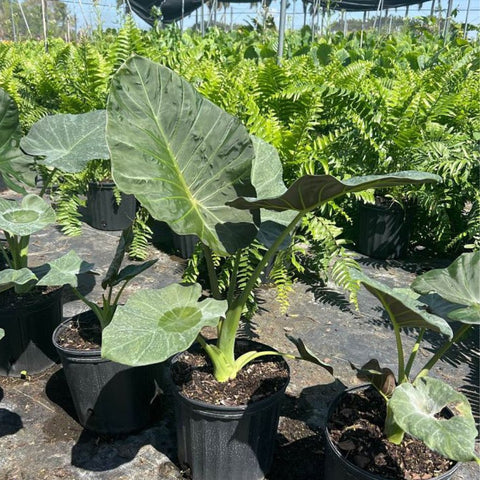I. Introduction
Spring awakens the world with vibrant colors and new beginnings. For gardening enthusiasts and beginners alike, it is the ideal time to nurture and rejuvenate your outdoor spaces. As an online e-commerce retailer specializing in plants and trees, Plantology offers insights and solutions to transform your garden into a thriving sanctuary this spring. Whether you're planning a garden overhaul or simply looking to add some seasonal flair, understanding the dynamics of spring gardening ensures your landscape remains lush and captivating throughout the year.

II. Planning Your Spring Garden
A. Understanding Your Climate and Zone
Before embarking on your gardening journey, it's crucial to understand your climate and hardiness zone, which dictates what plants will thrive in your environment. The USDA Plant Hardiness Zone Map is a helpful tool that categorizes regions by average minimum temperatures, assisting you in selecting plants suited for your local weather conditions.
B. Assessing Your Garden's Existing Conditions
Conduct a thorough assessment of your garden's condition post-winter. Look for damage from cold weather, areas with excess water, and inspect the soil health and quality. Healthy soil is the foundation of a robust garden, which requires checking soil pH levels, drainage capacity, and the presence of any pests or diseases.
C. Setting Your Garden Goals
Define what you want to achieve with your garden this season. Do you aim for a vegetable garden, a floral haven, or a low-maintenance landscape? Establishing clear goals will guide your plant and product selections, saving you time and enhancing efficiency.
III. Preparing Your Garden
A. Cleaning and Clearing
Begin with a garden clean-up, removing debris, dead plants, and weeds that might suppress new growth. A tidy garden not only looks visually pleasing but also allows for the healthy propagation of new plants.

B. Soil Preparation
Good soil preparation is vital for plant health. Amend your soil by adding organic matter such as compost or manure to enrich it with nutrients and improve its structure. Consider conducting a soil test to identify nutrient deficiencies and address them accordingly, ensuring optimal plant growth.
C. Pruning and Dividing
Spring is an excellent time for pruning and dividing perennials to promote healthy growth and prevent overcrowding. Trim dead branches and stems from shrubs, hedges, and roses to encourage vigorous blooms and robust structure.
IV. Selecting the Right Plants
A. Choosing Spring Blooms
Spring blooming perennials such as Agapanthus Lily of the Nile Blue bring a burst of color to your garden. These reliable, hardy plants offer longevity and elegance, perfect for borders and container gardening.
B. Introduce Evergreen Appeal
To create year-round interest, consider evergreen options like the Aglaonema Silver Bay. These plants offer texture and structure, complementing seasonal blooms while providing visual appeal even in off-seasons.
C. Incorporating Trees and Shrubs
Strategically placing trees and shrubs can enhance the overall aesthetics and functionality of your garden. The Alexander Palm or the Adonidia Palm Triple can serve as stunning focal points, offering architectural elegance and shade.

V. Planting Techniques and Maintenance
A. Proper Planting Methods
Ensure healthy growth by planting correctly. Dig a hole twice as wide as the root ball and of matching depth, gently teasing roots for optimal contact with the soil. This method aids in robust root establishment, supporting vigorous plant development.
B. Watering Wisely
Regular watering is essential, but avoid overwatering, which can cause root rot. Water deeply in the early morning or late afternoon to minimize evaporation loss, and consider installing drip irrigation systems for efficient water use.
C. Mulching for Moisture and Weed Control
Apply a layer of mulch around plants to retain moisture, suppress weeds, and maintain consistent soil temperature. Choose organic mulch options for added nutrients as they break down over time.
VI. Integrating Edibles into Your Garden
A. Selecting the Right Vegetables
Spring is ideal for sowing fast-growing vegetables like lettuce, radishes, and peas. Choose vegetables suited to your climate and soil conditions for a productive harvest.
B. Incorporating Herbs
Herbs like basil, mint, and thyme can be easily integrated into garden beds or containers, providing fresh flavor for your culinary creations and delightful scents within your garden.

C. Creating Attractive Edible Landscapes
Combine aesthetics and functionality by designing edible gardens that blend fruits, vegetables, and herbs with ornamental plants. This approach maximizes space and provides a sustainable harvest while maintaining visual appeal.
VII. Eco-Friendly Gardening Practices
A. Promoting Biodiversity
Encourage biodiversity by planting a diverse range of flora, attracting beneficial insects and pollinators essential for a healthy ecosystem. Consider including native plants that support local wildlife, enhancing garden vitality.
B. Composting and Organic Fertilizers
Reduce waste and improve soil quality through composting kitchen scraps and garden debris. Use organic fertilizers to nourish plants gently, reducing chemical runoff and promoting sustainable gardening practices.
C. Water Conservation Techniques
Implement water-saving measures such as rain barrels and drought-tolerant plants, minimizing environmental impact while lowering utility costs. Efficient irrigation systems can also optimize water use and reduce waste.
VIII. Enhancing Garden Design
A. Utilizing Containers and Planters
Maximize your gardening space with versatile containers and planters. They are perfect for small gardens or patios, allowing for customization and easy relocation of plants. Explore our wide range of Adonidia Palm Double for stylish container planting.

B. Creating Focal Points
Designate focal points such as a decorative fountain, sculpture, or striking plant grouping to draw attention and add character. Consider the commanding presence of the Adonidia Palm Single to elevate your garden's appeal.
C. Designing Pathways and Walkways
Outline pathways using natural stone, gravel, or wood to define spaces and provide guided access through your garden. These elements add structure and enhance the overall landscape design.
IX. Spring Pest and Disease Management
A. Identifying Common Pests
Spring can bring an influx of pests such as aphids, slugs, and caterpillars. Regularly inspect plants for signs of infestation and take prompt action to mitigate damage.
B. Organic and Integrated Pest Management
Opt for organic solutions or Integrated Pest Management (IPM) strategies that balance pest control with environmental protection. Employ natural predators, physical barriers, and organic pesticides to manage pests effectively.
C. Preventative Measures for Plant Health
Maintain optimal plant health through proper care and sanitation. Regularly clean garden tools, select resistant plant varieties, and practice crop rotation to minimize disease incidence.

X. Conclusion
Spring is a season of renewal and transformation, offering the perfect opportunity to breathe life into your garden. Armed with knowledge and expertise from Plantology, your garden can flourish, providing beauty and sustenance throughout the year. Explore our comprehensive range of plants and products at Plantology and transform your garden into a thriving masterpiece. With thoughtful planning, preparation, and maintenance, your spring garden will become a cherished oasis that showcases nature's wonders and enriches your outdoor living space.
Discover the diverse range of plants at Plantology and find the perfect match for your spring gardening needs. Your journey to a flourishing garden begins here!






























Comments (0)
There are no comments for this article. Be the first one to leave a message!